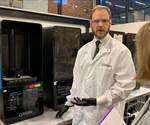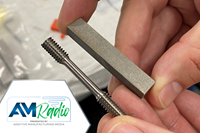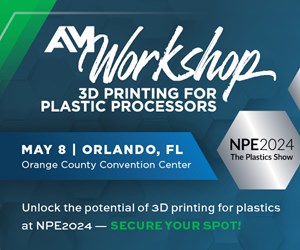Stratasys Aquisition Brings New AM Platform to Polymer Production
Origin’s resin-based Programmable PhotoPolymerization (P3) technology expands Stratasys product range in the fast-growing market for 3D printed mass production parts.

Stratasys Ltd. has signed an agreement to acquire 3D printing startup Origin Inc. in a transaction for total consideration of up to $100 million, including cash and stock. The merger is said to enable Stratasys to expand its leadership through innovation in the fast-growing mass production parts segment with a next-generation photopolymer platform.
Subject to various approvals and other closing conditions, the acquisition is expected to close in January 2021. The Origin team will join Stratasys and lead the development of its technology and product platform, with a full global launch via the Stratasys go-to-market organization toward mid-2021.
Stratasys expects Origin’s proprietary Programmable PhotoPolymerization (P3) technology to be an important growth engine for the company. The acquisition will help fortify Stratasys’ leadership position in polymers and production applications of 3D printing in industries such as dental, medical and tooling, and select industrial, defense and consumer goods segments.
“Our customers are looking for additive manufacturing solutions that enable use of industrial-grade resins for mass production parts with process and quality control,” says Yoav Zeif, Stratasys CEO. “We believe Origin’s software-driven Origin One system is the best in the industry by combining high throughput with incredible accuracy.”
Together with its intended entry into powder bed fusion technology, the acquisition of Origin reflects another step in fulfilling Stratasys’ objective to offer comprehensive, best-in-class technologies and solutions to create a fully digital additive value chain, designed for Industry 4.0 integration.
Origin’s P3 technology, an advancement on Digital Light Processing (DLP) principles, cures liquid photopolymer resin with light. The company’s first manufacturing-grade 3D printer, Origin One, controls light, heat and force, among other parameters, via Origin's closed-loop feedback software. This technology enables customers to build parts with accuracy, consistency, size and detail, while using a wide range of commercial-grade, durable resins.
Related Content
-
How to Improve Polymer AM Productivity 20X
A fast cycle time is critical to efficient production 3D printing, but it’s not the only thing. How you choose the right parts for AM, prepare jobs for production, and manage post processing will have just as big an impact on total 3D printing throughput. It all needs to work together to achieve maximum productivity.
-
Possibilities From Electroplating 3D Printed Plastic Parts
Adding layers of nickel or copper to 3D printed polymer can impart desired properties such as electrical conductivity, EMI shielding, abrasion resistance and improved strength — approaching and even exceeding 3D printed metal, according to RePliForm.
-
AM 101: Digital Light Synthesis (DLS)
Digital Light Synthesis (DLS) is the name for Carbon's resin-based 3D printing process. How it works and how it differs from stereolithography.














